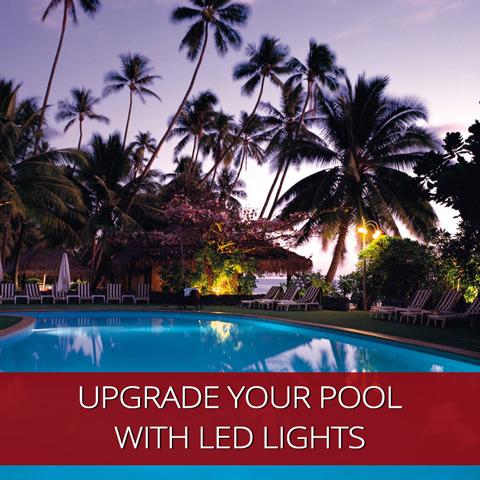Upgrade Your Pool With LED Lights
Pool lighting has been revolutionised in recent years. The explosion of LED technology — termed “a full-fledged aquatics industry movement” by Athletic Business — has paved the way for a whole host of innovative pool light designs. Not only are LED lights powerful, but they also require less energy and maintenance than traditional halogen lights, making them more cost-effective long term. LED lighting can enhance the ambience of your pool (along with the option of various colours), as well as ensure safety and prevent common poolside accidents like slips and falls.
Why LED?
Although traditional halogen lights do the job well, LED lights are far superior. Firstly, they use 80% less energy, which increases the sustainability of your pool. Secondly, they have a lifespan of about 50, 000 hours while halogen lights have one of just 5, 000 hours, Consumer Report explains. Visually, LED lights emit a soft glow which can be preferable to the precise torchlight beam of halogen. The downside of LED lights is their expensive price tag, although their longevity makes up for it.
Types of underwater LED lights
Underwater LED lights are either flush-mounted or surface-mounted. Flush-mounted lights are installed inside the pool wall, so they’re flush with it — popular in modern pool designs. Alternatively, surface-mounted lights are an older style that stick out slightly. If you have old lights you want to upgrade to LED, surface-mounted ones will be cheaper and easier to install.
Moreover, LED lights come in different colours, so you can change the look and feel of your pool. Whether you’re swimming, socialising, or relaxing, these lights will bathe your pool in gorgeous shades of changing colours to suit any occasion. They can be controlled with a programmed timer, remote control, and even smartphone app.
Safety first
Although you can find DIY installation tips online, it’s important to hire a licensed professional to install your LED pool lights. Electrical pool hazards can be further avoided with this practical advice laid out by the CPSC: Get your pool inspected regularly — particularly if it’s an older one. Be vigilant for signs of malfunctioning lights; if they flicker or behave abnormally, turn them off and get them fixed before using your pool again. Upgrade old pool lights to safeguard against malfunction.
Lastly, don’t forget about the area around your pool. Wall sconces and floor lights provide soft lighting which further enhances the ambience of the room. Moreover, this extra lighting will help maintain the safety of your pool at night.

